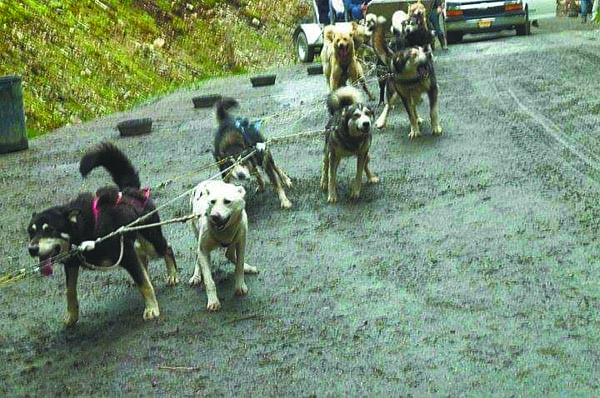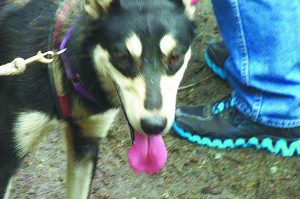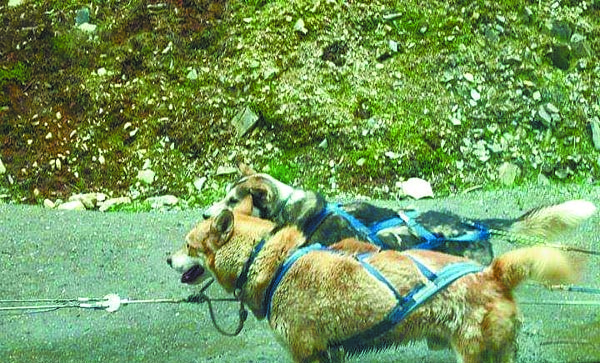March 7, 2022
Iditarod – The Alaskan Dog Sled Race

PUBLISHER’S CORNER
By Eloise Graham
The famed and treacherous dog sled race in Alaska takes place this year on Saturday March 5. The race as we know it today began in 1973. The tradition and mission, if you will, is steeped in loyalty to the dog teams, mushers and sleds that fought the elements on the rugged terrain to reach their goal. The race commemorates the intrepid mushers and their dogs who, in 1925, fought blizzard conditions to bring life saving diphtheria serum to Nome.
 The word “iditarod” comes from the languages of Ingalik and Holikachik. The Ingalik are an American Indian group in Alaska. The Holikachuk are an Alaskan Native people. Iditarod means distant or distant place.
The word “iditarod” comes from the languages of Ingalik and Holikachik. The Ingalik are an American Indian group in Alaska. The Holikachuk are an Alaskan Native people. Iditarod means distant or distant place.
The Iditarod Trail Sled Dog Race is an event to test the best sled dog mushers and teams. It has evolved into a highly competitive sport. The teams race through blizzards with white-out conditions, sub-zero temperatures and gale-force winds. Wind chills can reach -100 degrees. The trail runs from Anchorage to Nome, about 1,000 miles. There are two routes, the Northern route, which is used in even numbered years and the Southern route, used in odd numbered years. The trail starts out the same for about the first 450 miles, then separates at checkpoint of Ophir.
 There is a big purse for the winner, approximately $40,000. But the cost to enter is rather steep. Each musher must pay a $4,000 entry fee. Add on all the costs of the sled, the gear, the 14 dogs and their needs, transportation to return home after the race, other incidentals and you will see that the cost to race is very expensive. There are many other lesser sled races in Alaska. An Iditarod musher must have had previous racing experience in some of the lesser races.
There is a big purse for the winner, approximately $40,000. But the cost to enter is rather steep. Each musher must pay a $4,000 entry fee. Add on all the costs of the sled, the gear, the 14 dogs and their needs, transportation to return home after the race, other incidentals and you will see that the cost to race is very expensive. There are many other lesser sled races in Alaska. An Iditarod musher must have had previous racing experience in some of the lesser races.
The dog teams are very interesting. Race dogs must be either Siberian Huskies or Alaskan Huskies. The Siberian Husky is a breed of dog from the Spitz family. It is a little smaller in size but similar in markings to the Alaskan Malamute. The Alaskan Husky is a mixed breed of malamutes and other working sled dogs, all with a double coat of fur. Originally, the sled dog was a working dog that needed to pull the sled, possibly with a heavy load, through the rough terrain. The dogs’ bulk and muscle were of upmost importance. Now the load on the sled is streamlined as much as possible, only the bare necessities are taken. As the race evolved to be more competitive, the dogs were bred to be a little leaner and faster. Hence, the Alaskan Husky looks completely different from the malamute or Siberian husky.
To be a sled dog, the dog must love to run and pull a sled. They must also be able to keep warm in the snow. That is why the huskies must have a double coat. As you can see by the dog pictures, not all huskies are fluffy, white and black, and with blue eyes, pointy ears and curly tails. That describes the Siberian Husky which is only one breed of Husky.
 Eleven years ago, my granddaughter Kaylie and I visited a musher camp in Juneau, Alaska. The camp was a small community of its own. There were sleeping quarters for the mushers, dog handlers, cooks and so forth. The complex consisted of a dining hall for the people living there, a community room for guests like ourselves where we could browse through pictures and artifacts related to dog sled racing, the kennels for the dogs, a vet office.
Eleven years ago, my granddaughter Kaylie and I visited a musher camp in Juneau, Alaska. The camp was a small community of its own. There were sleeping quarters for the mushers, dog handlers, cooks and so forth. The complex consisted of a dining hall for the people living there, a community room for guests like ourselves where we could browse through pictures and artifacts related to dog sled racing, the kennels for the dogs, a vet office.
Our visit there was in July and the temps were 28 degrees to 38 degrees for the day. We had carriages that held six people and were pulled by a team of 14 dogs. The two lead dogs were experienced at racing. Some of the other dogs had raced, others were in training. The musher rode (stood) on a little platform at the rear and gave the instructions. His audible commands of “gee” or “haw” were very faint to my ears, but the lead dogs heard them and followed each command. We rode through trails near the camp. We didn’t ride very long, because it was a warm day for these double coated, winter loving animals. But we were given plenty of time to pet the dogs and even give them treats. We were also got to see some new puppies that were only a few days old. I think that was the highlight of Kaylie’s day. She fell in love with each one of them.
It was quite an experience, learning more about dog sled racing – the back story


